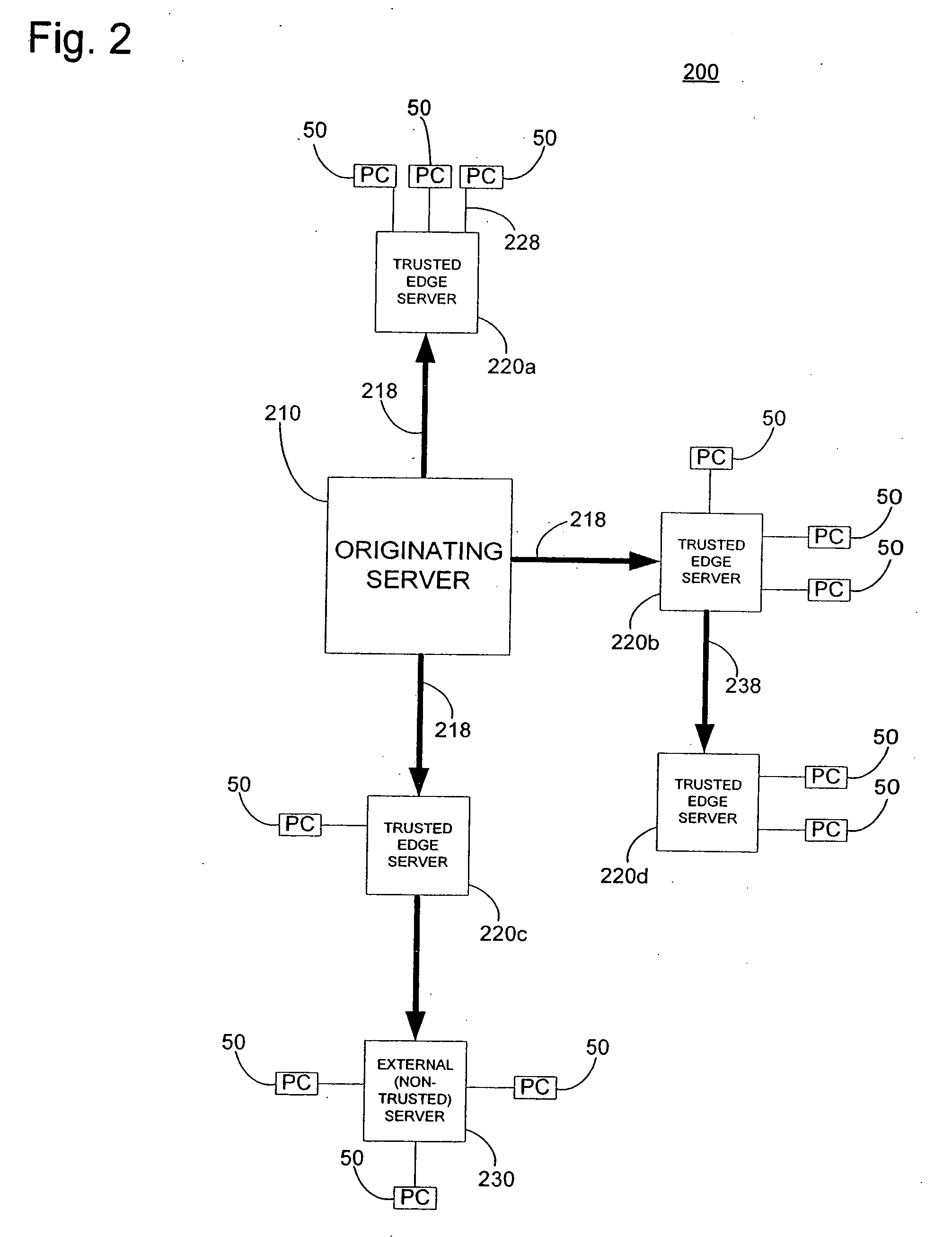Time-window-constrained multicast using connection scheduling
a time-window-constrained and scheduling technology, applied in the field of content delivery, can solve the problems of slow increase of bandwidth by which most communications can be sent, outstripped by the geometric growth of internet users, and at times, and achieve the effects of reducing bandwidth and heterogeneous client limitations, reducing server overload delay, and slow connection speed
- Summary
- Abstract
- Description
- Claims
- Application Information
AI Technical Summary
Benefits of technology
Problems solved by technology
Method used
Image
Examples
Embodiment Construction
[0023] The present invention is directed to a method, computer-readable medium and system for distributing interested clients among servers in a network in order to facilitate delivering an event to those clients within a time window. The present invention is further directed to a method, computer-readable medium and system for incorporating the network bandwidth and latency of client-server communications into an estimation of download times in order to facilitate delivering an event to interested clients within a time window. The present invention contemplates transferring clients between servers in order to minimize the time for delivery for each client-server connection and determining, either mathematically or empirically, an estimated transmission time to a client, or set of clients, and commencing the transmission of the event at a time earlier than the time at which the event is to be distributed to account for the estimated transmission time.
[0024] Turning to the drawings,...
PUM
 Login to View More
Login to View More Abstract
Description
Claims
Application Information
 Login to View More
Login to View More - R&D
- Intellectual Property
- Life Sciences
- Materials
- Tech Scout
- Unparalleled Data Quality
- Higher Quality Content
- 60% Fewer Hallucinations
Browse by: Latest US Patents, China's latest patents, Technical Efficacy Thesaurus, Application Domain, Technology Topic, Popular Technical Reports.
© 2025 PatSnap. All rights reserved.Legal|Privacy policy|Modern Slavery Act Transparency Statement|Sitemap|About US| Contact US: help@patsnap.com



